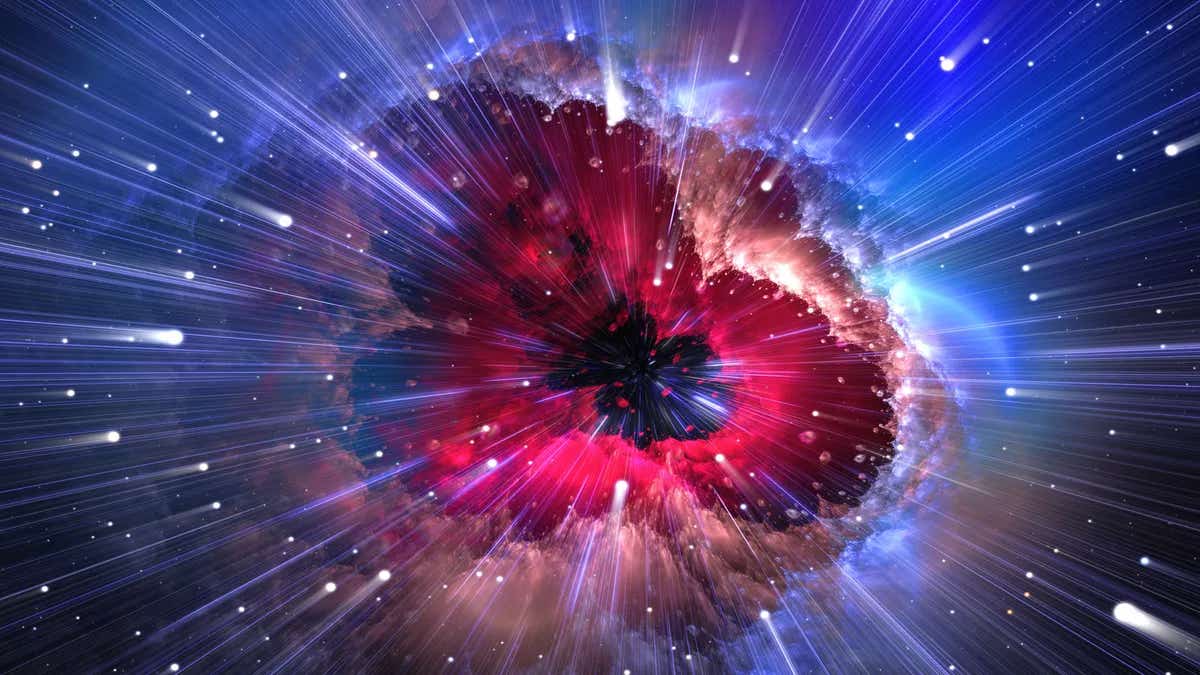Astronomers use ancient radio signals to detect the universe’s first stars
Scientists unlock secrets of the universe’s first stars using ancient radio signals, opening new pathways to understanding cosmic origins.

Ancient hydrogen signals could reveal the mysteries of the universe’s first stars. (CREDIT: Shutterstock Images)
Understanding how the universe transitioned from darkness to the emergence of stars marks a critical shift known as Cosmic Dawn. Yet, astronomers have struggled to unravel details about the first stars since these objects remain too distant and faint for direct observation. Recently, a team led by scientists at the University of Cambridge uncovered a way to study these early stars by analyzing a faint radio signal emitted by hydrogen atoms shortly after the Big Bang.
This radio emission, known as the 21-centimetre signal, carries signatures revealing how the first stars influenced their cosmic surroundings. This discovery, detailed in the journal Nature Astronomy, could dramatically enhance what scientists know about the universe's infancy.
A Universe Shaped by First Stars
About 380,000 years after the Big Bang, the universe was a smooth, uniform expanse consisting mainly of hydrogen and helium gas. Today, galaxies, stars, and heavier elements fill the universe, dramatically different from its original state. Scientists focus intensely on understanding this transformation, primarily driven by the formation of the first generation of stars, called Population III stars.
These initial stars arose from pristine gas without heavier elements. Their unique makeup means they probably formed and evolved differently from stars seen today. However, astronomers remain uncertain about critical details, particularly the mass distribution—known as the initial mass function—of these early stars. Previous models of star formation provided widely varying predictions, creating uncertainty about the universe’s early development.
Radio Signals Offer New Insights
To overcome this challenge, scientists at Cambridge proposed a novel approach using the cosmological 21-centimetre signal. This faint glow, emitted by neutral hydrogen gas just 100 million years after the Big Bang, offers a unique way to indirectly study the universe’s earliest objects. The team demonstrated that by measuring variations in this signal, future radio telescopes could reveal the characteristics of these ancient stars.
"This is a unique opportunity to learn how the universe’s first light emerged from the darkness," said Professor Anastasia Fialkov from Cambridge’s Institute of Astronomy, a co-author of the study. "The transition from a cold, dark universe to one filled with stars is a story we’re only beginning to understand."
Related Stories
Using advanced simulations, the researchers assessed how Population III stars and their remnants impacted the 21-centimetre signal. Specifically, they studied the effects of X-ray binaries—systems composed of a normal star orbiting a dense, collapsed star—which significantly heat the intergalactic medium. Earlier studies underestimated these effects, overlooking the role X-ray binaries play in shaping the signal.
Telescopes at the Forefront
Two major projects aim to detect and analyze the 21-centimetre signal. One is REACH (Radio Experiment for the Analysis of Cosmic Hydrogen), a single wide-beam antenna currently being calibrated. The other is SKA-Low (Square Kilometre Array), a vast collection of antennas under construction in South Africa. Both are uniquely positioned to capture subtle changes in ancient hydrogen signals.
Although neither REACH nor SKA-Low can directly image individual stars, their observations provide statistical insights about populations of early stars, galaxies, and binary systems. "It takes a bit of imagination to connect radio data to the story of the first stars, but the implications are profound," noted Fialkov.
The team specifically showed that measuring slight variations in the 21-centimetre signal could help determine the mass range of Population III stars. Achieving a sensitivity of 25 millikelvin with REACH or 3,000 hours of observations with SKA-Low would significantly narrow uncertainties about the earliest stellar masses. Such precise measurements will help scientists better understand how the universe transitioned into its current complex state.
Cosmic Archaeology and the Early Universe
While direct observation of Population III stars remains elusive, indirect evidence exists through stellar archaeology and deep imaging by telescopes like the James Webb Space Telescope (JWST). Recent observations of distant galaxies, such as GN-z11 at a redshift of 10.6, hinted at the presence of Population III stars due to distinctive ultraviolet emission patterns.
"The predictions we are reporting have huge implications for our understanding of the nature of the very first stars in the universe," said Dr. Eloy de Lera Acedo, the principal investigator of REACH. "We show evidence that our radio telescopes can tell us details about the mass of those first stars and how these early lights may have been very different from today’s stars."
Insights gained from these telescopes will guide future observations, opening new avenues in cosmological research. Understanding the mass and behavior of these stars clarifies broader astrophysical mysteries, including galaxy formation, element creation, and early universe heating processes.
"Radio telescopes like REACH promise to unlock mysteries of the infant universe, and these predictions are essential to guide the radio observations we are doing from the Karoo, in South Africa," de Lera Acedo added.
Ultimately, deciphering the faint whispers encoded in ancient radio signals allows researchers to peer deeply into the universe’s earliest chapters, shedding light on how it evolved from simplicity to complexity. With new telescopes and innovative analysis methods, astronomers are poised to fill critical gaps in understanding the universe's mysterious beginnings.
Note: The article above provided above by The Brighter Side of News.
Like these kind of feel good stories? Get The Brighter Side of News' newsletter.



